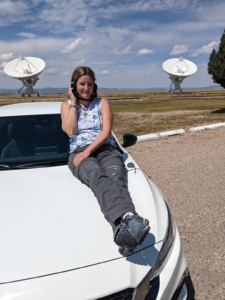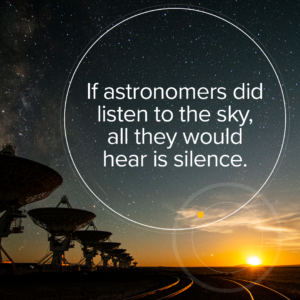Pair of Super-Earths Have 1,000-Mile-Deep Oceans
Latest News
VLA and ALMA Study Jupiter and Io
While the National Science Foundation’s Karl G. Jansky Very Large Array (VLA) and the Atacama Large Millimeter/submillimeter Array (ALMA) frequently reveal important new facts about objects far beyond our own Milky Way Galaxy — at distances of many millions or billions of light-years — they also are vital tools for unraveling much closer mysteries, right here in our own Solar System. A pair of recent scientific papers illustrate how these telescopes are helping planetary scientists understand the workings of the Solar System’s largest planet, Jupiter, and its innermost moon Io.
The National Radio Astronomy Observatory is a facility of the National Science Foundation, operated under cooperative agreement by Associated Universities, Inc.
###
Media Contact:
Dave Finley, Public Information Officer
(575) 835-7302
[email protected]
The post VLA and ALMA Study Jupiter and Io appeared first on National Radio Astronomy Observatory.
Silent as the Night: Why Radio Astronomy Doesn’t Listen to the Sky
In the 1997 movie Contact, Ellie Arroway is a young radio astronomer played by Jodie Foster. Ellie’s on a mission to discover alien life, and in one famous scene filmed at the Very Large Array, she sits at the edge of the observatory, listening to the radio sounds of the sky with antenna dishes in the background. It’s a wonderful cinematic moment highlighting Ellie’s lonely search for truth and has become so iconic that many visitors to the VLA take “that shot” of themselves wearing headphones in front of a radio dish. But as beautifully poetic as the scene is, it is Hollywood magic, not hard science. The radio signals from Ellie’s headphones and computer would interfere with the observatory’s sensitive equipment and radio astronomers don’t listen to the sky.

The idea that radio astronomers listen to celestial objects is perhaps the biggest misconception in radio astronomy. And to some degree it’s understandable. People listen to the radio all the time, so surely radio astronomers must do the same. But the sounds we hear on the radio aren’t the sounds of radio itself. They are converted from electrical signals. Sound waves require a medium such as air to travel through, and since space is essentially a vacuum, sounds can’t travel through space. If astronomers did listen to the sky, all they would hear is silence.
Radio is a form of light. It’s just like visible light, but with a much longer wavelength. While visible light has a wavelength on the scale of atoms, radio light has wavelengths ranging from about the thickness of a pencil lead to more than the length of a bus.
Because radio wavelengths are on the human scale, the technology of radio astronomy is often very different from that of optical astronomy. There are broad similarities. Both optical and radio astronomy use reflective surfaces to focus light onto a detector or receiver, which then converts the light into a digital signal. Astronomers can then use this digital signal to create astronomical images. But because radio wavelengths are so much longer than visible wavelengths, we have to achieve this feat in different ways.

One key factor is the size of the reflector. Generally, the larger your reflector or mirror, the more light you can focus and the sharper and brighter your image. This is why the best optical telescopes have mirrors several meters in diameter. But the size of your reflector must scale to that of your wavelength. Since radio waves are thousands of times longer than visible waves, a radio telescope mirror would need to be larger than Manhattan. That isn’t something we can build, so instead, we create arrays of smaller dishes. Each antenna dish acts like a piece of a larger mirror. Astronomers can then simulate a city-wide dish by combining data from the array of smaller dishes.
Another factor is that radio light is often much fainter than visible light, and there are many things that create radio light. This means that radio telescopes need to be protected from everyday objects such as cell phones and computer equipment that emit radio light. The antenna receivers must also be extremely cold. Objects at room temperature emit lots of faint radio light which can affect the accuracy of observational data, so the receivers and other electronics of a radio telescope must be supercooled to convert radio light into a digital signal.
Of course, once astronomers have their data, they can always convert that data into sound. This is most famously done with pulsars, where the electric bursts of energy from a neutron star are converted to audible pops. Astronomers have also converted phenomena such as the turbulent aurora of Jupiter, or the wail of a distant nebula. These sounds can give us an emotional connection to the cosmos, but just like the scene from Contact, they are merely a poetic interpretation of the radio light we capture.
The post Silent as the Night: Why Radio Astronomy Doesn’t Listen to the Sky appeared first on National Radio Astronomy Observatory.
Hubble Detects Ghostly Glow Surrounding Our Solar System
Exhaust from Infalling Comets Makes Space a Dusty Place
Peekaboo! Tiny, Hidden Galaxy Provides a Peek into the Past
Tucked away in a local pocket of dark matter, a late-blooming dwarf galaxy looks like it belongs in the early universe.
Peekaboo! A Tiny, Hidden Galaxy Provides a Peek into the Past
Tucked away in a local pocket of dark matter, a late-blooming dwarf galaxy looks like it belongs in the early universe.
NRAO Signs Cooperative Agreement with UNAM For Development of the Next Generation Very Large Array
The U.S. National Science Foundation’s National Radio Astronomy Observatory (NRAO) and the Universidad Nacional Autónoma de México (UNAM) have signed a memorandum of understanding establishing their collaboration on the Next Generation Very Large Array (ngVLA), a new radio observatory currently in design and development at NRAO.
The signing ceremony was attended by NRAO Director Tony Beasley and UNAM Rector Enrique Graue Wiechers, along with representatives of AUI, NSF, and the federal government of Mexico on November 4, 2022, in Mexico City.
“This new memorandum of understanding between NRAO and UNAM strengthens our existing partnership and is the foundation for important cooperative work on ngVLA, including the future selection of sites for the new array in Mexico,” said Beasley. “We look forward to building the future of radio astronomy with UNAM and our other partners.”
The ngVLA is an upcoming array of 263 radio antennas spread across North America that, once approved and constructed, will address fundamental questions in all major areas of astrophysics, including exoplanets, galaxy formation, and black hole evolution.
“International partnerships are critical for the construction of larger and more complex facilities. It is exciting to see scholars at UNAM and the NRAO working together on the ngVLA,” said Debra Fischer, division director of Astronomical Sciences at NSF. “The best scientific and engineering talent in both countries are attracted to observatories like ngVLA where new discoveries could revolutionize our understanding of the universe.”
The new MOU builds upon prior collaborations between NRAO and UNAM for the design and development of the ngVLA. In August, NRAO announced the appointment of Alfonso Trejo-Cruz, an astronomer at UNAM, to lead site selection and development of ngVLA sites in northern Mexico.
As part of the MOU, UNAM will contribute $1 million over four years to the collaboration to fund site characterization, imaging, and configuration, geolocation, etc.
NSF previously awarded NRAO $23 million for design and development work on a prototype antenna in 2021, a process that is nearing completion. Once approved, construction on the ngVLA could begin as soon as 2026, with projected early scientific observations starting in 2029 and full scientific operations by 2035.
The National Radio Astronomy Observatory is a facility of the National Science Foundation, operated under cooperative agreement by Associated Universities, Inc.
About Universidad Nacional Autónoma de México
UNAM is the largest university in Latin America and carries out education, research, and innovation in all disciplines. UNAM has campuses and research stations in most states across Mexico, and harbors numerous services and national institutions, fostering social mobility and contributing to Mexico’s development for the future.
Media Contact:
Amy C. Oliver, FRAS
Public Information & News Manager, NRAO
Public Information Officer, ngVLA
[email protected]
+1-434-242-9584
The post NRAO Signs Cooperative Agreement with UNAM For Development of the Next Generation Very Large Array appeared first on National Radio Astronomy Observatory.
Hubble Captures 3 Faces of Evolving Supernova in Early Universe
Blast from the Past Caught in Episodes Due to Gravitational Lensing
How NASA’s Roman Telescope Will Scan for Showstopping Explosions
Roman is set to help researchers detect more kilonovae, helping us learn significantly more about these “all-star” smashups.
ALMA Services Affected by Cyberattack
Last Saturday, October 29, at 6:14 AM CLT, the ALMA observatory in Chile suffered a cyberattack on its computer systems, forcing the suspension of astronomical observations and the public website. There are limited email services at the observatory. The threat has been contained, and our specialists are working hard to restore affected systems. The attack did not compromise the ALMA antennas or any scientific data. Given the nature of the episode, it is not yet possible to estimate a timeline for a return to regular activities. We are thankful for the support and understanding across the ALMA partnership and apologize for any inconveniences resulting from the recovery efforts.
Contact:
Nicolas Lira Turpaud
Education and Public Outreach Coordinator
ALMA Observatory in Chile
+56 9 94 45 77 26 (WhatsApp)
Amy C. Oliver
Public Information and News Manager, National Radio Astronomy Observatory
Public Information Officer, ALMA North America
+ 1 434 242 9584
+1 801 783 9067 (WhatsApp)
[email protected]
—
Servicios de ALMA afectados por ciberataque
El pasado sábado 29 de octubre, a las 06:14 horas CLT, el observatorio ALMA en Chile sufrió un ciberataque a sus sistemas informáticos, lo que obligó a suspender las observaciones astronómicas y su sitio web. Los servicios de correo electrónico del observatorio se encuentran funcionando de manera limitada. La amenaza ha sido contenida y nuestros especialistas están trabajando arduamente para restaurar los sistemas afectados. El ataque no comprometió las antenas de ALMA ni ningún dato científico. Dada la naturaleza del episodio, aún no es posible estimar un plazo para el regreso a las actividades regulares. Estamos agradecidos por el apoyo y la comprensión de todos los socios de ALMA y nos disculpamos por cualquier inconveniente que resulte de los esfuerzos de recuperación.
Contacto:
Nicolas Lira Turpaud
El observatorio ALMA en Chile
+56 9 94 45 77 26 (WhatsApp)
Amy C. Oliver
El observatorio ALMA en América del norte
+ 1 434 242 9584
+1 801 783 9067 (WhatsApp)
[email protected]
The post ALMA Services Affected by Cyberattack appeared first on National Radio Astronomy Observatory.











